AMAZON multi-meters discounts AMAZON oscilloscope discounts
IF you like the "whodunit" type of novel, you know that the trick is to supply as many clues as possible and yet spring a surprise ending on the reader. In an electronics guide of this sort we also supply as many clues as possible. The big surprise will come when you realize that basically, transistor circuitry is fairly simple and repetitive.
The audio amplifiers we studied in Section 5 live on a diet of dc and ac. The de is supplied by one or more batteries. The ac is the signal, and the closer we get to the speaker, the hungrier the transistor gets for hefty input. To build the signal to a value large enough to satisfy the audio driver we generally need several if stages. Note that we did not include the detector, although this stage follows the ifs as a matter of course. The reason for this is that in almost all transistor radio receivers the detector is a diode, and as such, supplies no gain.

Fig. 601. Transistor detector works class B. In absence of a signal,
the transistor is cut off.
A signal of proper polarity supplies forward bias. The transistor rectifies, and supplies gain.
Transistor detectors
A transistor can be used as a detector and it does this job very nicely and easily, as we can see in Fig. 601. The circuit has several points of considerable interest, so let's take a good look at it. We can start with transformers T1 and T2. T1 is an if transformer and couples the transistor detector to the preceding stage. T2 is the audio-output transformer and is our connecting link to the following audio stage. T1, as shown by the short lines separating the primary and secondary, has a ferrite core or slug. The arrowhead on top does not indicate the proximity of Indians, but rather that the core is tunable. Since we have a single arrowhead we know that this core will tune either the input or output side of T1, depending on its position. Sometimes you will see a double dashed line ( each with its own arrowhead). This means that both primary and secondary are tunable. T2, the audio transformer, has a laminated iron core, and, of course, this is fixed.
We've been talking about if at T1 and audio at T2 and so, as you have probably gathered, something takes place in between these two transformers to effect this conversion. The change from if to audio is done for us by the transistor, working as a detector or signal rectifier.
The case of the missing bias
What is so unusual about this transistor, though? We've seen transistors before. If you'll look carefully, you'll see that while we have the collector-emitter circuit properly biased by the battery, we have made no provision for biasing the base-emitter or input circuit. It is true that the emitter is tied to the plus terminal of the battery, but as far as the base is concerned, it is way up in the air.
The low resistance of the secondary winding of if transformer T1 might easily lead us to believe that the base is practically shorted to ground (or to the emitter). It is if we consider it only from the viewpoint of de. But the impedance of the secondary is adequate for the signal.
Effect of the signal
Since we have no forward bias on the transistor, very little collector current flows. Suppose, though, that transformer T1 receives a signal voltage from the preceding stage, and let us also suppose that the polarity of this signal is such that the top end of the secondary is plus and the bottom end is minus.
What has the signal done? Because the secondary of the if transformer is connected between the base and the emitter, we now have a signal voltage between those two elements. The signal has made the base positive and the emitter negative. But this is reverse bias! Its effect is to drive the transistor collector current down toward the cutoff point. As a result we get no signal output and transformer T2 just sits idly by, waiting for something to happen. This won't take too long since the polarity of our input signal changes. The top end of the secondary of T 1 now becomes negative and its bottom end positive. This is just what the base emitter circuit has been waiting for, since this is forward bias.
The collector current now climbs, its value depending on the strength and duration of the incoming signal.
Detection and amplification
What has our transistor done? Two things! It has rectified the signal, since only half of the input waveform has any effect on the output. It has also amplified that half that did get through.
But what is the if? Isn't it just a sort of carrier with the audio superimposed on it? All we want for the audio amplifier is audio signal, though, the carrier being valueless at the output of the transistor detector. For this reason we put an if bypass (C1) between collector and emitter. Like all other capacitors, its reactance varies inversely with frequency. Since the if will probably be 455 khz, while the audio might have a top range of 10 khz (if that high), you can readily appreciate that C1 will do its best to bypass the if but will offer considerably more opposition to the audio signal. The audio signal passes through the primary of T2, and promptly gets transferred, by electromagnetic induction, to the next stage.
Decoupling
This sounds so neat and pat that it may be hard to believe--and you would be right to be skeptical. Some audio does sneak through C1, thus getting back to the emitter, and never has a part in ultimately moving the voice coil of the speaker. And some if and audio does get through the primary of T2, down to the battery. To keep these currents from circulating through the battery, we protect ourselves with another bypass, C2. Since the battery we show in Fig. 601 is used by all stages, we can't have the battery working as a coupling device. When C2 is fresh, it just goes along for the ride. But batteries get older and as they do they are very much inclined to act as coupling devices in addition to their primary function of supplying a voltage.
Transistor detectors are used where the gain of the detector is essential. This is not the case in the average 6 (or more) -transistor radio, but it is sometimes used in inexpensive two-transistor receivers. We have the circuit in Fig. 602.
With two-transistor receivers we need every bit of gain, and so these are often made with a collapsible rod antenna. The tuned circuit is L1-C1. C1 is a single-section variable capacitor having a maximum capacitance value of 365 µ.µ.f. R1, the volume control, is a 5-megohm potentiometer shunted across the primary of audio transformer, T1. V1 works in the same manner as described for the detector circuit in Fig. 601. It would be helpful to have an rf bypass capacitor connected to the collector of V1, but since sets of this sort sell for a very low price, this component is often omitted. V1 gets its forward bias from the signal, and its collector emitter bias from a 3-volt battery.
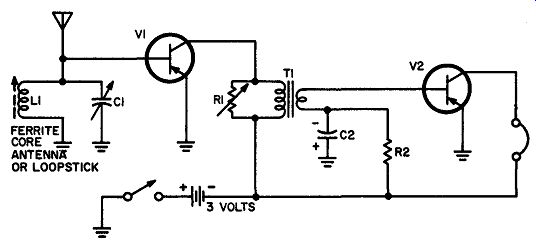
Fig. 602. Two-transistor receiver. V1 is the amplifying detector; V2
the audio amplifier.
After detection and amplification by V1, the signal is transferred by an audio step-down transformer to the base-emitter input circuit of audio-amplifier transistor V2. This transformer could have a primary impedance of one hundred thousand ohms or more and a secondary impedance of about a thousand ohms.
Forward bias for V2 is supplied by a single resistor, a 100,000 ohm unit, R2. This may seem a little strange, since we've become accustomed to a series-resistor voltage divider arrangement shunted across the battery for forward bias. We can examine the biasing arrangement by taking a closer look at the components involved, in Fig. 603. Instead of having the bias resistors in parallel with the battery, we have just a single resistor, and it is series connected. Again, the idea behind an arrangement of this kind is economy. Since we are working with a p-n-p unit, we want the base negative with respect to the emitter, but certainly not as negative as the collector must be. The arrow shows the direction of base-emitter current. This current passes through R2, but the voltage developed across R2 is in opposition to the battery voltage. The base-emitter voltage is equal to the battery voltage, minus the drop across R2. The signal voltage, appearing across the secondary of T1, modulates the current moving in this circuit, and as a result we get a similar (but amplified) variation in the output.
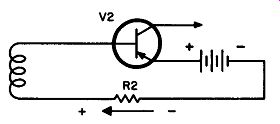
Fig. 603. Forward-biasing system for V2 depends on a single series resistor.
Getting back to Fig. 602, we have a capacitor (C2) rated at 3 working volts dc and 10 uf functioning as a bypass at the bottom end of the secondary of T1. The purpose here is to keep any audio frequency currents out of R2. We depend on R2 to furnish bias and we would like to keep the voltage across R2 as steady as we can.
Automatic gain control
Since transistors have been designed to supply gain, we can't get too exasperated when they amplify weak signals and strong signals with equal enthusiasm. It would be much better if the transistor showed a little judgment here, but that would be expecting too much ... or would it? What do we want the transistor to do? We would like it to use its full gain for very weak signals, less gain for stronger signals; and for very strong signals not to flex its muscles at all. We force the transistor to do this with the help of a very simple circuit with not such a simple name. We call it automatic gain control, which we promptly abbreviate as age. Sometimes the same circuit is called automatic volume control, or ave.
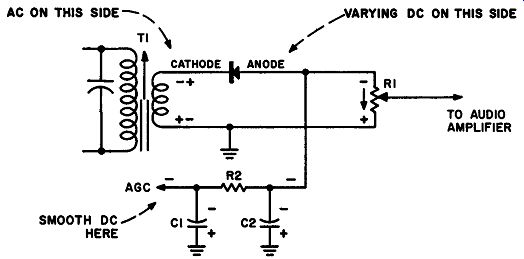
Fig. 604. Diode detector and age circuit. R1 is the diode-load volume
control.
The voltage developed across R1 is also used for age.
To understand age, consider how the transistor works. As we increase forward bias, collector current increases. A strong signal will give us a much greater rise in forward bias than a weak signal. If we could increase the forward bias for a weak signal and reduce it for a strong signal, we might be able to rid our selves of the annoyance of sound blasting from the speaker as we go from station to station. Age isn't a cure-all, but it does help alleviate the problem somewhat.
Our first step toward getting age is shown in the stripped-down circuit of Fig. 604. T1 is an if transformer and is responsible for delivering the if signal to the diode detector. As you can see, our diode detector is just a half-wave rectifier. R1, our volume control, is our diode load. When the signal across the secondary of T1 has the correct polarity (diode cathode negative) current will flow through R1 in the direction of the arrow. This makes the top end of R1 negative with respect to ground. It is true that the voltage across R1 is a varying audio signal, but it flows in one direction only, hence is a changing dc. We can take this de voltage, and send it through a filter consisting of C1, C2 and R2 and by the time we get to the arrow marked age, we have a nice, steady dc voltage.
But can we really boast about the steadiness of this dc voltage? If we get a strong signal, we will get a greater voltage drop across R1. This means more voltage for our filter. A weak signal means less voltage. We now have available a negative voltage (with respect to ground) whose strength is determined by the signal.
Let's see what we can do with this negative voltage. In Fig. 605 we have a transistor if stage and a diode detector. The top end of the diode load is positive and the bottom end negative (for part of the time) when a signal is received. We have inserted this resistor right in series with our two voltage divider resistors that normally supply forward bias for the transistor. If you will examine the diode load, you will see that the voltage developed across it is in opposition to the voltage across R1 and R2. But how great is this opposition and on what does it depend? A strong signal will develop a stronger voltage across the diode load. But this stronger voltage will oppose the forward biasing arrangement of R1 and R2. As a consequence, the gain of the transistor in the last if stage (in Fig. 605) will not be as great as it would be with out this opposition. A weak signal, of course, will produce much less voltage than a strong one, and so the transistor will be allowed to work with greater gain.
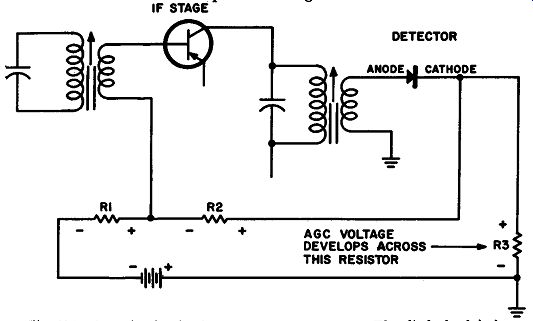
Fig. 605. Steps in the development of an age system. The diode load
is in series with R1 and R2. In the absence of a signal, forward ,bias
for the if transistor is supplied by R1 and R2 in series with the diode
load resistor.
Resistors R1, R2 and R3 are shunted across the battery. Signal current, though, flows only through R3. The voltage developed across RJ is in opposition to the voltage produced across RJ by the battery current.
Now you might think this is a wonderful idea and just jim dandy, but look hard enough and you will find a price tag cached away somewhere. And where is the serpent in the age Garden of Eden? The gain is reduced for all signals. We can tolerate this for strong signals, but for some weak signals it is tantamount to signal suicide.
As a matter of common practice, age is often tapped from the top of the volume control (which acts as the diode load) and is fed back as a control voltage to the transistor in the first if stage.
We have this arrangement in Fig. 606. The series arrangement, R1, R2 and the volume control, R3, act as the voltage divider for the first if transistor. Capacitors C1 and C2 are age filters, bypassing any signal variations to ground or to the emitter of the first if. C4 looks as though it might be part of the age network, but its function is that of an rf bypass, to keep the if out of the volume control, hence out of the audio system which follows. Similarly, C3 in the first if stage is also an rf bypass.
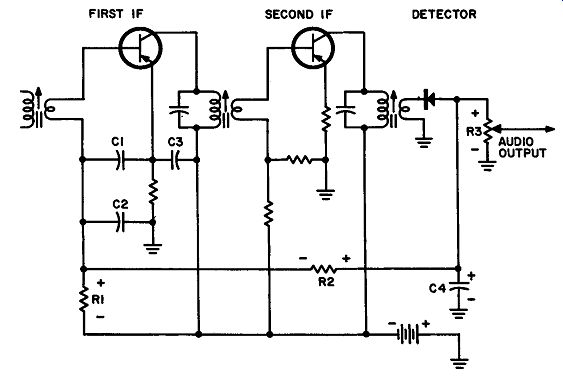
Fig. 606. Capacitors C1 and C2 and volume control R3 form the essential
elements of the age system.

Fig. 607. R1 and C1 are the decoupling components.
Decoupling
All of the stages in a transistor radio receiver, no matter what we may ask them to do, have a common denominator. The one component through which all the transistors are related is the battery. Transistors, though, have signal currents as their stock in trade. And these signal currents do not regard a battery with the same uncritical eye as a transistor-radio fan. To a signal current a battery is an impedance. When the battery is fresh, it has such a low impedance that the signals just go scooting right through it as fast as a junior scout on a greased pole. But as a battery gets used, or if it just sits around waiting to be used, its impedance rises just as surely and inevitably as your yearly taxes. When the impedance gets high enough the signal has a field day, since it can develop a signal voltage across the battery.
The battery, though, is common to all stages, and when in a somewhat discharged condition, acts as a coupling element. The sum and substance of all this is that there is nothing the signal currents would rather do than go wandering through the battery and then through the various receiver stages. Now we cannot have this since it is a form of signal anarchy. Once we lose control of the signal anything can happen, with the result usually evidenced as a series of weird noises out of the speaker.
We can avoid this unhappy state of affairs by shunting the battery with an electrolytic capacitor or by decoupling the collectors of the transistors. All that is needed are some series resistors and capacitors. A typical circuit is shown in Fig. 607. C1 is the bypass and R1 is the series resistor. R1 can have a value of several hundred ohms up to about 1K. A value of .05 µf for C1 is common. In this circuit, T1 is an if transformer.
Auxiliary age
Nothing delights the heart of a design engineer more than his ability to make one component do two jobs. An emitter resistor, for example, not only supplies the correct voltage for the emitter, but (when its shunting capacitor is omitted) some negative feed back as well. In Fig. 607, decoupling resistor R1 can be made to do an interesting variety of chores. It works, as we have mentioned, as a decoupling resistor. It drops the battery voltage so that the correct amount is placed on the collector. And it contributes its little mite to the circuit shown in Fig. 608, and known as an auxiliary age.

Fig. 608. This auxiliary age system uses a diode shunted across an if
stage.
Problems, problems
Now you might have thought that we were finished with age. We are, except for a problem we have when operating a transistor radio in strong signal areas. Transistor receivers can produce an inspiring amount of gain and if we begin with a strong signal, it is entirely possible that the age system couldn't cope with this combination. To help matters, we use the circuit shown in Fig. 608. The heart of this auxiliary system is the diode which we have connected from the collector circuit of one if stage to the collector circuit of the next. The two if stages are identical, except for one very important difference. The first if is not age controlled; the second if is. Suppose, now, that no signal is being received. With out signal, the collector currents of the two stages will be the same (assuming identical transistors and components). If R1 and R2 are resistors of the same value, the voltage drops across these resistors will be the same. This means that the voltage at point A in Fig. 608 will be the same as the voltage at point B. Forgetting the resistances of the if transformer windings for the moment, this means that the cathode of the diode and its anode are both at the same potential. Under this condition, the diode might just as well not be in the circuit. However, we do have a little bit of a voltage drop across the primary of T 1, and so we have a potential impressed across the diode. The polarity of this potential, though, is such that the diode is reverse biased. We need this touch of reverse biasing, since the diode, hanging on to the collector of our first if, is in a fine position to sabotage the signal. Reverse biasing, hence increased resistance, prevents this.
Signals--weak and strong
Now suppose we receive a weak signal or one that is just moderate. The effect of this is to reduce the forward bias of the second if. But if we do this, the collector current of the second if is also reduced. The collector current, though, flows through R2. This reduced current means less voltage across R2, with the result that point B becomes more positive. For weak or moderate signals, the increase of positive voltage at point B isn't too significant.
But what if we get a signal that is strong? The drop across R2 will become much less. It will be just as though we had moved point Bright down to the plus terminal of the battery. But this is connected to the anode terminal of the diode. The diode becomes forward biased.
From here on events take place rapidly. A forward biased diode acts very much like a resistor of very low value. When the signal arrives at the top of T1 it finds to its surprise that a short cut awaits--an easy path to ground through the diode over to point Band from point B through the bypass capacitor (C1) to ground.
Of course not all of the signal is killed, enough of it getting through T1 and the second if to produce a respectable amount of volume out of the speaker. But no blasting and no mad dash to get at the volume control.

Fig. 609. Out of the total impedance supplied by a coil, we can select
as little as we need for our transistor circuit.
Impedance matching
Every if transformer has two requirements, but unfortunately these demands can be in conflict--and usually are. One essential of an if winding is that it should have enough turns so that it can be tuned to the intermediate frequency. To be able to do this, it must have a certain number of turns. But as the number of turns is increased, so is the overall impedance of the winding. But we want the impedance to match the base-emitter input or the collector-emitter output.
Although this idea is fairly evident when we work with resistors, it isn't quite so obvious with inductors. To make sure we understand it, let's move on to Fig. 609. In Fig. 609-A we have a pair of 500-ohm resistors in series, for a total of 1,000 ohms. The resistance from point A to ground is 1,000 ohms, but if we move the ground point up, as in Fig. 609-B, the resistance from point A to ground is only 500 ohms. This is true even though we still have 1,000 ohms connected into our circuit. Now move over to Fig. 609-C where we have a coil having an impedance of 1,000 ohms from point A to ground. If we put the tap at the electrical center of the coil (this is not the same as the physical center), then the impedance from point A to ground (Fig. 609-D) is only 500 ohms. We do not need to connect a direct ground, for in Fig. 609-E we see that we have a capacitor wired into our electrical centertap. This puts the center at ac ground potential and so the impedance from A to the point of connection for the capacitor is only 500 ohms. However, the entire coil might still be connected into our circuit.

Fig. 610. The collector of the transistor is tapped down on the primary
of the if transformer to obtain an impedance match. Capacitor C1 acts
as an ac short to ground. Maximum impedance would be at point A on the
coil winding. The impedance gets less and less as we move toward point
B.
All of this has a very practical bearing on our transistor circuits. We can take advantage of the techniques shown in Fig. 609 so that we get a good match between the transistor and the if transformers. If you will look at Fig. 610 you will see that we have the final if stage of a transistor receiver. The total impedance of the primary of the if transformer is measured between points A and B. Point B, though, is connected to C1, a 50-µ.f capacitor. One side of this capacitor is grounded and so, as far as any signal voltage is concerned, point B is at ac or signal ground potential. The collector is connected to a tap on the primary. The total impedance presented by the primary winding to the transistor is the impedance of the coil between the collector tapping point and point B. If we were to move the tap further up on the coil, we would get more and more impedance into the collector circuit.
The maximum would be if we connected the tap to point A. The impedance divider Impedance division, such as that obtained through the use of a tapped coil, is no different from using a resistor as a voltage divider. Actually, a tapped coil used as an impedance divider could also be called an ac voltage divider, a somewhat better name since this is a constant reminder that the impedance or voltage division is effective for ac only.
Looking at Fig. 610 again, you might get the impression that since the collector is tapped so far down, there is a large loss of signal voltage. The tap, though, has the effect of converting the primary into an autotransformer, supplying both a voltage step up and a very nice example of having our cake and being able to munch on it as well.
Tapped coils can be used in the transistor input, the transistor output, or both, as shown in Fig. 611. It is applicable to both types of transistors--p-n-p and n-p-n. And although we have indicated impedance matching by having the collector tapped down on the if transformer, we could connect the collector to the top of the coil and tap up with the emitter. This is shown in Fig. 612.
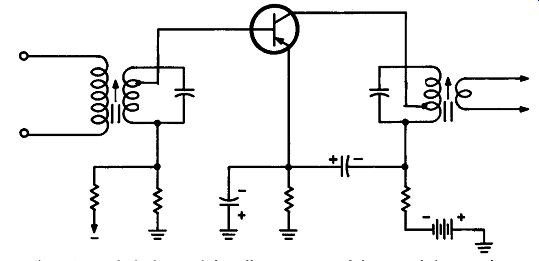
Fig. 611. Both the base and the collector are tapped down on their respective
if transformers for impedance matching.
The tap on the coil is at signal ground. The impedance presented to the collector is between the tap and the top end of the coil.
Not only is the tap important for impedance matching purposes, but its position also helps control the amount of negative feed back, when this is used.
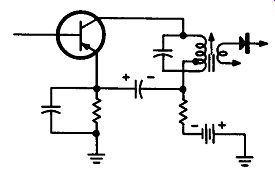
Fig. 612. For impedance matching, we can have the collector tap down
(as in Fig. 611) or the emitter tap up on the if winding. The result
is the same.
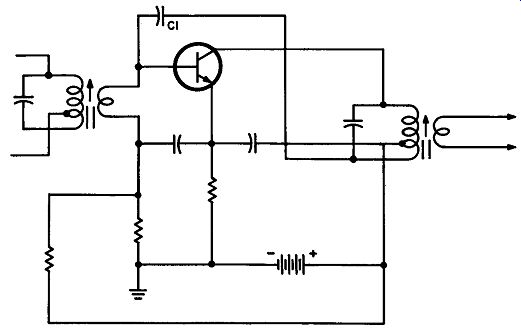
Fig. 613. C3 is the neutralizing capacitor. The amount of negative feedback
depends on the value of C1 and the position of the tap on the primary
winding of the if transformer.
Negative feedback or neutralization
If the transistor is behaving itself, the signal in the collector circuit is much more substantial than the signal in the input of the same transistor. Do you remember the story of Lot's wife? As told in the Bible, she looked back and was turned into a pillar of salt. Now this won't happen to our output signal but we want it to look forward, not backward. We don't even want a small fraction of it to go backward, because if it does, it may cause miscellaneous troubles such as oscillation and narrowing of the bandpass. We're particularly worried about the if stage since it so happens that its design is just ideal for signal feedback. Our transistors are triodes and our input and output circuits are tuned to the same frequency. Triodes love to oscillate and do so with carefree ease, especially with if transformers. Now the very strange thing about all this is that for oscillation to take place, the fed back signal (the output signal) should have the same phase as the input. But in the common emitter circuit, the output is out of phase with the input. However, between the stray capacitance in the circuit, and the inductance of the if transformer, we can get enough of a phase shift so that the output signal drifting back to the input is sufficiently in phase with it so that it creates mischief.
Fig. 614 Some negative feedback circuits for neutralization of if amplifiers.
The simplest method (A) uses a fixed capacitor and a tapped transformer. A series resistor can be inserted as in B to help control the feedback. The positioning of the resistor (R) and the capacitor (C) in B and C does not affect the results of the feedback. Sometimes the negative feedback is arranged from the base of the following stage (as in D) to the base of the preceding stage. The amount of feedback is controlled by R and C. Feedback is usually needed in more than one sta6e and is connected as in E when tapped trans formers are not used.
The answer to this problem (see Fig. 613) is to feed back, deliberately, enough of the output signal to the input, to cancel the signal leaking back accidentally. We connect a feedback capacitor, C1, between the output and the input. Note that C1 is really attached to the bottom end of the coil while the collector bias is attached to the tap on the if transformer. This provides an out of-phase signal to cancel the collector-to-base feedback in the transistor. We can adjust the amount of neutralization feedback by moving the tap, but remember, when we do so, we are also changing the impedance of the transformer and this is also the collector load. Changing the value of C1 will also change the amount of feedback to the base circuit. Putting resistance in series with the capacitor will reduce the feedback. The best way to control this is with a variable capacitor that can be adjusted so that we get just the amount of feedback that is needed. This is the most expensive technique.
Feedback variations
There are other ways in which we can neutralize a triode transistor so that it does not oscillate. A few of these techniques are shown in Fig. 614. In Fig. 614-A we have a capacitor connected as in Fig. 613. The capacitor can have a very small value, a few micro-microfarads being sufficient. We can also cut down on the amount of feedback by putting a resistor in series with the feed back capacitor as in Fig. 614-B. It makes no difference whether the resistor comes before or after the capacitor (Fig. 614-C). We can also make our feedback connection directly to the input of the following stage, as in Fig. 614-D. When neutralization is continued stage to stage the circuit in 614-E is used.
The problem of selectivity
Every receiver--whether transistor or tube--has at least one variable tuned circuit and a number of fixed tuned circuits. We want tuned circuits in a receiver because we need them to be able to separate one station from the next. Variable tuned circuits are those that are continuously adjustable by either a moving ferrite slug or a variable capacitor. A fixed tuned circuit, as its name implies, is tuned to a particular frequency and remains that way. Theoretically, variable tuned circuits are just dandy, but in practice having more than one tuned circuit presents a host of practical problems, particularly the very serious one of having all of the tuned circuits remain in step throughout the whole tuning range. This was the difficulty faced by early radio receivers which invariably were of the trf (tuned radio frequency) type. At first each circuit was tuned separately. This meant a separate tuning dial for each circuit and it was not uncommon to see radio sets with three dials, each one of which had to be adjusted whenever a different station was to be tuned in. As you can imagine, tuning from one station to the next was not the most popular indoor sport. Then some bright-eyed lad had the brilliant inspiration of putting all the tuning capacitors on a single shaft. This worked fairly well, but in general it limited the trf to about three tuned circuits.
The super-hetrodyne changed this, for each tube-type if stage could supply two tuned circuits. If a receiver had three ifs, this meant a total of six tuned circuits, thus supplying at once twice as many tuned circuits as the old trf's.

Fig. 615. We have two types of feedback: negative (also known as degenerative,
inverse, or out-of-phase) for neutralization, and positive (also known
as regenerative or in-phase). Positive feedback is used to produce oscillation;
negative feedback to prevent it.
Frequency conversion
Briefly, a superhetrodyne works on the principle of frequency conversion. The receiver has a variable tuned circuit capable of selecting any frequency on the broadcast band. In the receiver, a circuit known as a local oscillator also produces a signal.
We now have two signals, one supplied by the broadcast station and the other, locally, by the receiver. When these two signals are mixed, the result is a third signal which we call the intermediate frequency. The receiver oscillator (or local oscillator) is continuously adjustable, so that the difference between its frequency, and that of the radio station, is always constant. Thus, if you tune a radio set to a station at 1400 kilocycles, the local oscillator will be set by that same tuning action to 1855 kilocycles. When these two frequencies, 1400 khz and 1855 khz, are mixed, one of the resulting frequencies will be the difference between the two, or 455 khz. This is our intermediate frequency or if. If we tune our set to 800 khz, our local oscillator will be at 1255 khz. Once again, the difference between the two frequencies will be 455 khz. Thus, the whole idea--the basic idea--of a superheterodyne receiver is to change any frequency on the broadcast band to a single fixed frequency. Because of this action, we can have many tuned if stages--actually fixed tuned because they remain tuned to but one frequency.
Converters
The job of changing the broadcast signal to an intermediate frequency (if) signal can be done by a pair of transistors or by a single unit. If two transistors are used, one is known as the mixer and the other is called the local oscillator. In practically all transistor receivers, however, just a single transistor is used to work both as a mixer and local oscillator. This transistor is called a frequency converter, or, more simply, a converter. If a separate transistor is used as the local oscillator, and a separate transistor as the mixer, we refer to the combined operation as a heterodyne action. If a single transistor combines both functions, we call the operation autodyne. Actually, the behavior is the same whether we use one transistor or two.
The autodyne converter
The converter transistor circuit receives the signal from the antenna at its input; delivers an if signal at its output. The trouble with this statement is that it is notable for the information it does not give us. The converter is a triple header. It:
1. amplifies the incoming or rf signal
2. mixes or heterodynes the rf signal with the locally produced oscillator signal
3. amplifies the if signal
This is quite a multiplicity of jobs for just one transistor, so let us separate these transistor functions and examine them separately.
The local oscillator
An oscillator, as used in a radio receiver, is a radio or high frequency ac generator. Typically, the oscillator works because we take a portion of the amplified signal developed in its output and feed it back to the input. Now this sounds very much like the neutralization techniques we described earlier, and so it is, with one basic difference. Neutralization uses feedback that is out of phase with the input; oscillation uses feedback that is in phase.
These differences are shown in Fig. 615.
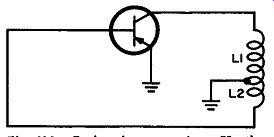
Fig. 616. Basic elements of a Hartley oscillator.
The Hartley oscillator
In Fig. 616 we have a very popular oscillator; the Hartley. The battery, resistors and capacitors have been omitted for the moment.
In this circuit current will flow from the collector to the emitter.
The emitter is grounded and so is a tap on the coil. The current will flow through this common connection, up through the coil, back to the collector, thus completing its rounds. But the current, in passing through that part of the coil we call LI, built up a magnetic field around LI. This magnetic field induces a voltage across L2. If you will trace the connections to L2 you will see that it is in the base-emitter or input circuit.
Now let us suppose that the voltage across L2 has a polarity such that it supplies forward bias for the input. The result of this will be an increase in collector current. But if we get an in crease in collector current, we will get a stronger growing magnetic field around L1, and this, in turn, will induce even more voltage across L2. This increases the forward bias, which, once again, produces more collector current.
Of course there is a limit. The output circuit cannot increase its current output indefinitely, and soon the collector reaches saturation, or maximum current level. As it approaches saturation, the rate of change of increase in current becomes less and less. But to get an induced voltage we need a changing magnetic field--our induced voltage across L2 depends on it for its existence. Consequently, we get a smaller and smaller induced voltage across L2, until finally, when the collector current is at saturation, we get no induced voltage at all. At this point we have maximum current through L1 and a maximum magnetic field around it.
But this magnetic field is a steady one and as such, is incapable of inducing a voltage. What has happened to our forward bias? Since it consists of the voltage across L2, it has disappeared. But with no forward bias, the collector current starts to decrease. This decreasing current once again produces a changing magnetic field around L1 and once again we get a voltage induced across L2. But the polarity of this voltage is exactly the opposite of what it was before. Now the voltage across L2 reverse biases the input.
This drives the collector current down to cutoff. But at cutoff, there is no current through LI. There is no magnetic field around L1 and we have nothing with which to induce a voltage across L2.
But isn't this where we came in? When the reverse bias is re moved from across L2, a small amount of collector current begins to flow. This produces a growing magnetic field across L1, inducing a forward-biasing voltage across L2--and so the entire action repeats.
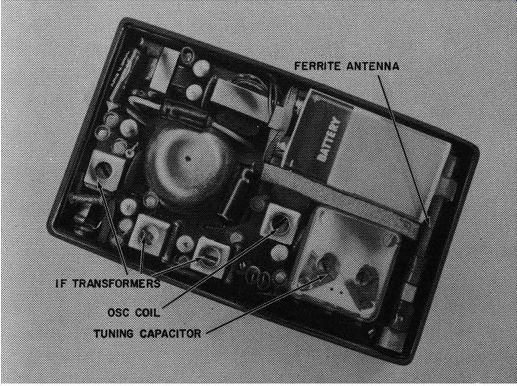
--------- Typical transistor portable has three fixed tuned circuits
in the if transformers and the tuning capacitor controls the resonant
frequency of the ferrite antenna and oscillator.
Operating frequency
In this circuit, the collector current runs the gamut from cutoff to saturation. The frequency with which it does this is determined by the value of L1. If we put a capacitor in shunt with L1 or in series with it, the frequency will be determined by the value of both components--the coil and the capacitor, the combination often being referred to as a tank circuit. L2 is sometimes called the tickler or feedback coil.
The Armstrong oscillator
Although they may not seem so, coils L1 and L2 in Fig. 616 form a transformer. This isn't immediately apparent since most of us are accustomed to thinking of transformers as units having separate primaries and secondaries. Transformers with a tapped winding, as in the case of the Hartley oscillator, are called auto transformers. In Fig. 617 we have two examples of such trans formers. Fig. 617-A is a step-up unit; that in Fig. 617-B is a step-down. Corresponding to these autotransformers we have those with separate primaries and secondaries, as in Figs. 617-C and D.
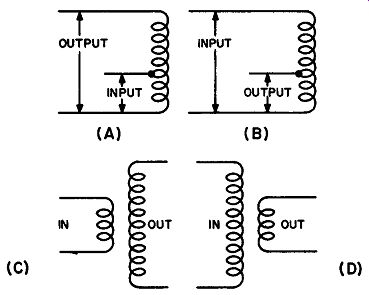
Fig. 617. Autotransformers and trans formers with separate windings.
In A we have a step-up autotransformer; its counterpart is shown in C.
B is a stepdown autotransformer; its counterpart is shown in D.
The Armstrong oscillator uses a transformer having individual primary and secondary windings. See Fig. 618. The circuit works in exactly the same way as the Hartley. As far as any current variation is concerned, the two coils L1 and L2, are really connected.
The bottom end of L2 is grounded. The bottom end of L1 is grounded through capacitor C1. This means that L1 and L2 are connected electrically, although not physically, as in Fig. 616.
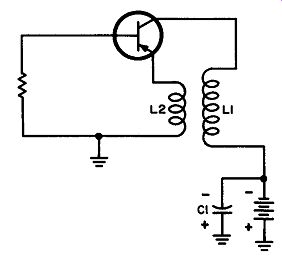
Fig. 618. Basic elements of an Armstrong oscillator.
The complete oscillator
What we have shown you so far are the basic essentials of an oscillator. The local oscillator, though, must have a variable tuning circuit so that its operating frequency can be continuously adjusted when selecting a station. In Fig. 619 we have a variable tuning capacitor, C2, shunted across L2. This capacitor is mounted on the same shaft as the rf tuning capacitor (not shown in Fig. 619). Thus, when the rf tuning capacitor is turned to select the station desired, C2 is also turned at the same time. The local oscillator frequency is determined by the values of L2 and C2, and this. frequency, as we mentioned earlier, is 455 kilocycles higher than the frequency of the broadcast signal.

Fig. 619. Local oscillator circuit. L1 is the tickler or feedback coil.
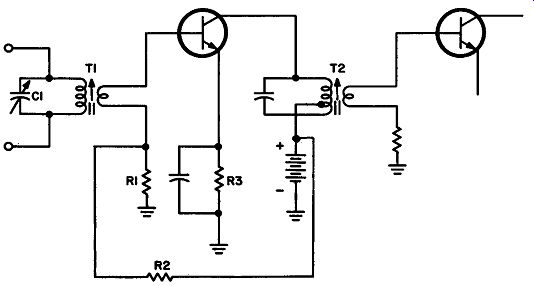
Fig. 620. Mixer circuit. The local oscillator has not been connected
to it.
Fig. 619 has a few other items of interest. Note our old friends, R1 and R2, once more in the act. In this case, we choose a value of bias so that our transistor works in the low-current region.
This is the part of the collector characteristic that is curved or non-linear. We must operate this way to get the local oscillator and rf (or broadcast) signals to beat or mix with each other.
R1 and R2 put a de voltage on the base. But the base is connected to a tap on L2, one end of which is connected to ground.
To keep L2 from shorting R1, we include a capacitor C1.
The mixer Now that we have our local oscillator, let's remove the transistor and see how it also works as a mixer. We're going to use the same transistor since it is going to operate both as a mixer and local oscillator. The circuit is shown in Fig. 620. As you can see, the arrangement looks just like a straightforward amplifier. The rf signal is tuned by C1, shunted across the primary of T1. The rf tuning capacitor is mounted on the same shaft as C2 in Fig. 619. The signal is delivered to the base-emitter input circuit by T1. R1 and R2 are the same forward-biasing components we used in Fig. 619. R3 is also the same. In the collector circuit, though, we now have T2, our first if transformer.
T2 delivers the if signal to the base of the following stage.
When the signal is received by T1 it is rf. T1 is a ferrite-rod antenna and picks up the signal. The signal that is delivered by T2 is if, and so, somewhere between T1 and T2, we must have some sort of frequency conversion, to change the signals of all stations on the broadcast band, to the single frequency required by the if stages.

Fig. 621. Complete mixer circuit.
Our final step to the complete mixer is to combine the circuits of Fig. 619 and Fig. 620, the local oscillator and the mixer, into just one circuit. We have this in Fig. 621, and if you will examine it carefully, you will see just how this was done.
Most of our components remain the same. C1 is ganged to C2, as shown by the dashed line connecting them. The oscillator trans former consists of L1 and L2. The primary of the if transformer, T2, is in series with L1 of the oscillator section. We've added some new components--C3 and R3. These form a decoupling filter to isolate the mixer from the other stages in the receiver.

Fig. 622. Rf amplifier circuit. It can be connected to the mixer shown
in Fig. 621.
How it all works
Our ride from the back end of a receiver to the front end is just about completed. At this time, though, let's think back over our whole trip to see if we can connect our ideas into one neat, little package.
The ferrite antenna in the receiver is capable of picking up any signal in the broadcast band. The desired signal, though, is selected by a variable capacitor shunted across the ferrite antenna.
The broadcast signal, consisting of a radio frequency carrier modulated by an audio signal, is brought into the input of a mixer transistor. Here the signal is mixed or heterodyned with a locally produced signal. The result of this mixing process is a signal which represents the difference between the rf and local oscillator signals. This is a frequency conversion process and produces the intermediate frequency or if signal. All that has really happened is that our radio frequency has been lowered in frequency. It is still carrying with it, the audio signal from the broadcast station.
The if is amplified by one or more if stages. Finally, when the if signal is strong enough, it is fed into a detector circuit. In the detector, the audio signal is rectified by means of a diode or a transistor. Immediately after rectification, the remaining if is shunted away or bypassed by means of a capacitor. The audio is fed into a driver stage, and then into a single-ended or pushpull audio amplifier, and finally to the speaker. Meanwhile, back at the detector, the rectified audio signal is also filtered and sent back to one or more earlier stages as an age voltage.
Although each transistor stage does a slightly different job, you can see that they are similar in many respects. If you know how any transistor amplifier works, you are well on your way to under standing them all.
For this reason, the transistor rf amplifier shown in Fig. 622, will come as no great surprise. In this circuit, T1 now becomes an rf transformer coupling the rf stage to the mixer. The rf amplifier supplies the receiver with certain advantages. There is greater gain because of the amplification supplied by the rf transistor. There is also some added selectivity, since we now have three variable tuned circuits. This calls for a three-gang tuning capacitor on which we have mounted C, C1 and C2. Transformer T now becomes our ferrite rod antenna. The rf amplifier is neutralized by resistor R and capacitor C.
And still more circuits
The circuits we studied in this section simply prove that transistors can perform the same functions as tubes in a receiver. But transistors aren't limited to receivers only. In our last section we are going to have a chance to become acquainted with other transistor abilities.
QUIZ
1. What is the function of a detector?
2. What are the advantages of using a diode as a detector?
3. What are the advantages of using a triode transistor as a detector?
4. How must a transistor be operated to make it work as a detector?
5. What is automatic gain control. How does it improve reception?
6. How does an automatic gain control circuit work?
7. What is the difference between ordinary age and auxiliary age?
8. What is decoupling? Why is it needed? How is it obtained?
9. What is meant by impedance matching? How is it done? Why is it necessary?
10. How is a transistor if stage neutralized? Why is neutralization used?
11. What is negative feedback? Positive feedback? When and why are they used?
12. What is a converter? Why is it needed? How does it work?
13. Describe a typical local oscillator and explain its operation.
14. Draw the basic diagram for a Hartley oscillator and for an Armstrong oscillator.
15. Compare mixers and converters and explain how they differ.
16. How does an rf amplifier improve reception?